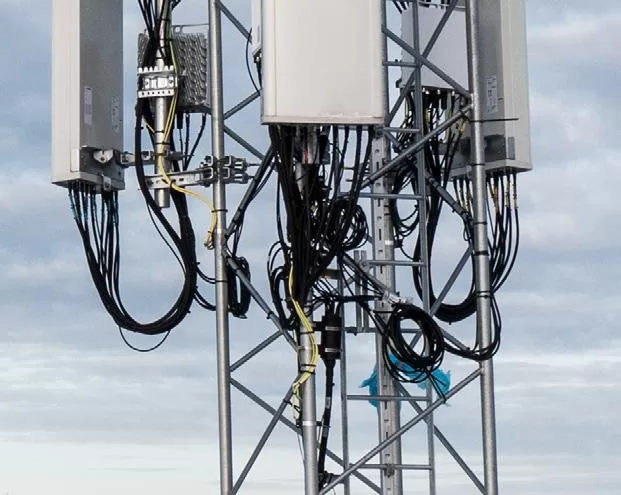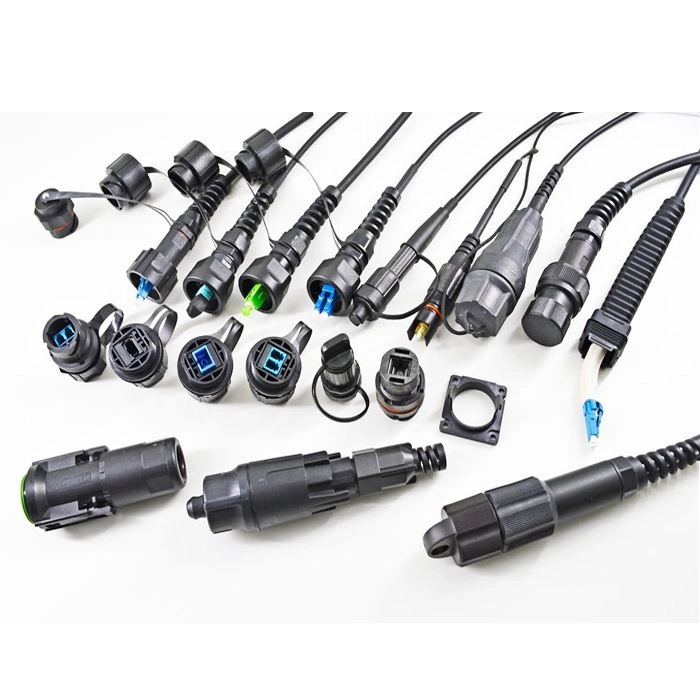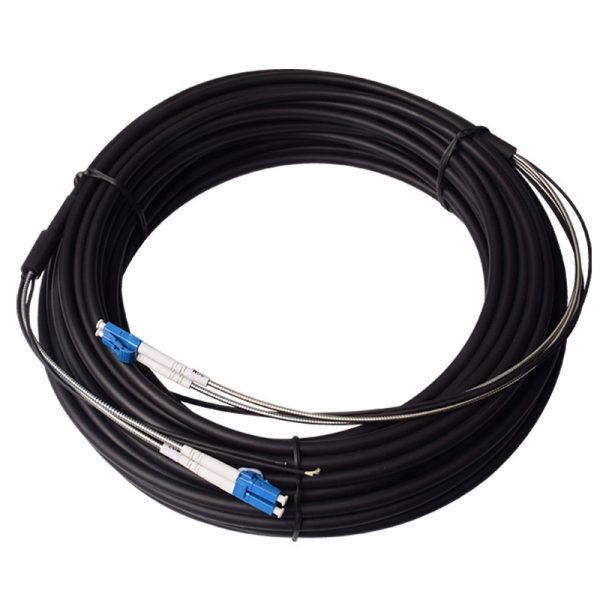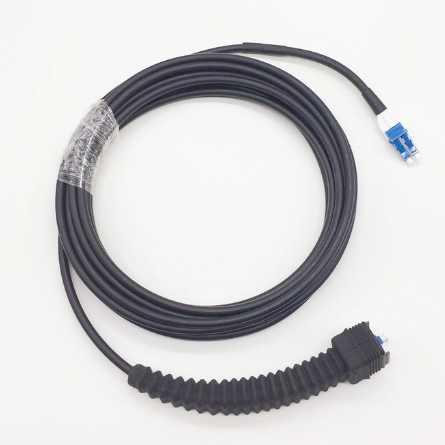
La fibra hasta la antena (FTTA) es un método de implementación que extiende el cable de fibra óptica directamente a antenas montadas en torres, tejados u otras estructuras. Este enfoque ofrece varias ventajas sobre el cableado tradicional basado en cobre, que incluyen:
- Mayor ancho de banda: Los cables de fibra óptica pueden admitir anchos de banda significativamente mayores que los cables de cobre, lo que permite la transmisión de aplicaciones con uso intensivo de datos, como 4G, 5G e Internet de banda ancha.
- Latencia reducida: Los cables de fibra óptica tienen una latencia menor que los cables de cobre, lo cual es crucial para aplicaciones en tiempo real como conferencias de voz y video.
- Fiabilidad mejorada: Los cables de fibra óptica son menos susceptibles a las interferencias y la degradación de la señal que los cables de cobre, lo que resulta en una conexión de red más confiable.
Cables de conexión de fibra FTTA son un componente esencial de los despliegues del FTTA. Estos cables proporcionan la conexión entre el cable troncal de fibra óptica y la antena. Están diseñados para soportar entornos exteriores hostiles y proporcionar una transmisión de señal confiable.

Tipos de cables de conexión de fibra FTTA

Los cables de conexión de fibra FTTA están disponibles en una variedad de tipos, que incluyen:
- Modo singular: Los cables de fibra óptica monomodo están diseñados para transmisiones de larga distancia. Normalmente se utilizan para implementaciones FTTA que conectan antenas a estaciones base ubicadas a varios kilómetros de distancia.
- Multimodo: Los cables de fibra óptica multimodo están diseñados para transmisiones a distancias más cortas. Normalmente se utilizan para implementaciones FTTA que conectan antenas a estaciones base ubicadas a unos pocos cientos de metros.
- Blindado: Los cables de fibra óptica blindados están protegidos por una capa de armadura, como Kevlar o acero, que los hace resistentes a aplastamientos, impactos y otros daños. Por lo general, se utilizan en ambientes exteriores hostiles.
- No blindados: Los cables de fibra óptica no blindados no están protegidos por armadura. Por lo general, se utilizan en ambientes interiores o exteriores donde existe un riesgo mínimo de daños.
Elegir el cable de conexión de fibra FTTA adecuado

El tipo de cable de conexión de fibra FTTA que elija dependerá de su aplicación específica. Aquí hay algunos factores a considerar:
- Distancia: La distancia entre la antena y la estación base determinará el tipo de cable de fibra óptica que necesitas. Para distancias superiores a unos pocos cientos de metros se necesitan cables de fibra óptica monomodo.
- Ambiente: El entorno en el que se instalará el cable determinará si necesita un cable armado o no armado. Se requieren cables blindados para entornos exteriores hostiles.
- Tipo de conector: El tipo de conector que necesitará dependerá del equipo que esté conectando. Los tipos de conectores comunes para cables de conexión de fibra FTTA incluyen LC, SC y ST.
Parámetros del cable de conexión de fibra FTTA

Al elegir un cable de conexión de fibra FTTA, es importante considerar los siguientes parámetros:
- Tipo de núcleo: El tipo de núcleo del cable de fibra óptica determina la longitud de onda de la luz que se puede transmitir. Los cables de fibra óptica monomodo suelen utilizar un núcleo de 9/125 µm, mientras que los cables de fibra óptica multimodo suelen utilizar un núcleo de 50/125 µm o 62,5/125 µm.
- Modo: El modo del cable de fibra óptica determina el número de caminos de luz que pueden viajar a través del cable. Los cables de fibra óptica monomodo admiten un camino de luz, mientras que los cables de fibra óptica multimodo admiten múltiples caminos de luz.
- Tipo de conector: El tipo de conector del cable de fibra óptica es el tipo de conexión que se utiliza para conectar el cable al equipo. Los tipos de conectores comunes para cables de conexión de fibra FTTA incluyen LC, SC y ST.
- Longitud del cable: La longitud del cable es la longitud del cable de fibra óptica.
- Tipo de chaqueta: El tipo de cubierta del cable de fibra óptica es el tipo de material que protege el cable del medio ambiente. Los tipos de cubierta comunes para cables de conexión de fibra FTTA incluyen PVC, LSZH y FR-LSZH.
Comparación de cables de conexión de fibra FTTA
A continuación se muestra una tabla que compara los diferentes tipos de cables de conexión de fibra FTTA:
| Característica | Modo singular | multimodo | Blindado | No blindado |
|---|---|---|---|---|
| Distancia | Larga distancia | Distancia corta | Cualquier | Interior/exterior de bajo riesgo |
| Ambiente | duro al aire libre | Bajo techo, en exteriores | duro al aire libre | Interior/exterior de bajo riesgo |
| Tipo de conector | LC, SC, ST | LC, SC, ST | LC, SC, ST | LC, SC, ST |
| Tipo de núcleo | 9/125 micras | 50/125 µm, 62,5/125 µm | Cualquier | Cualquier |
| Modo | Modo singular | multimodo | Cualquier | Cualquier |
| Tipo de chaqueta | PVC, LSZH, FR-LSZH | PVC, LSZH, FR-LSZH | PVC, LSZH, FR-LS |
Nuestra compañía - Tecnología BATIV Ofrecemos una variedad de cables de conexión de fibra confiables y de alta calidad diseñados para cualquier aplicación FTTA, lo que garantiza una fuerte transmisión de señal a largas distancias, resiste ambientes exteriores hostiles y presenta los tipos de conectores exactos necesarios para integrarse perfectamente en la infraestructura de telecomunicaciones existente, todo a precios competitivos. . Contáctenos Para obtener una cotización gratuita, nuestro equipo experimentado está listo para brindarle soluciones FTTA profesionales.
